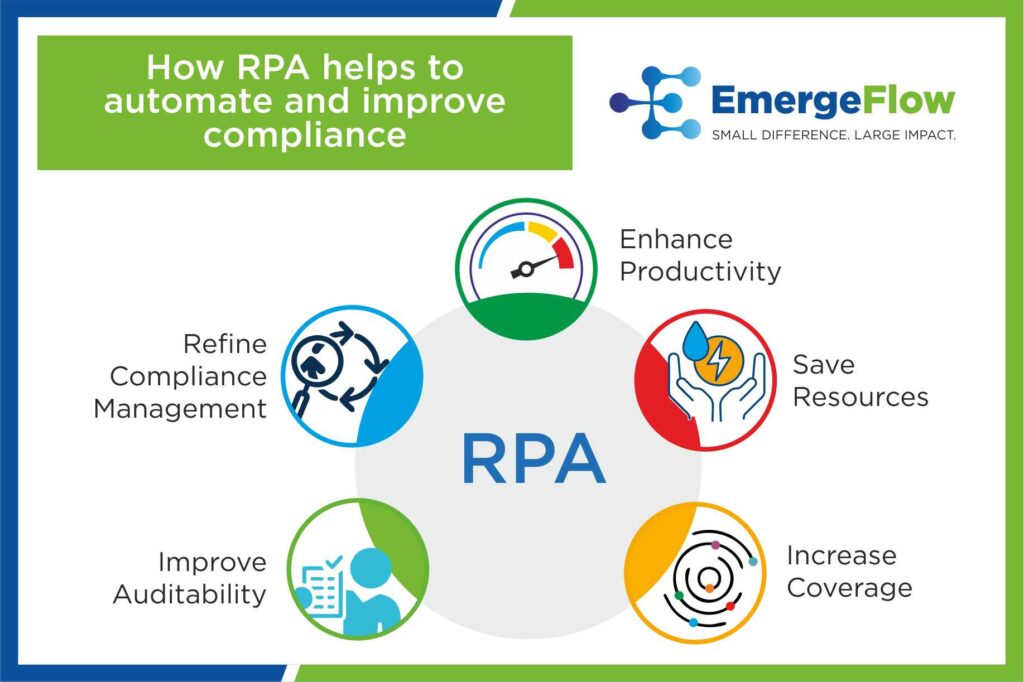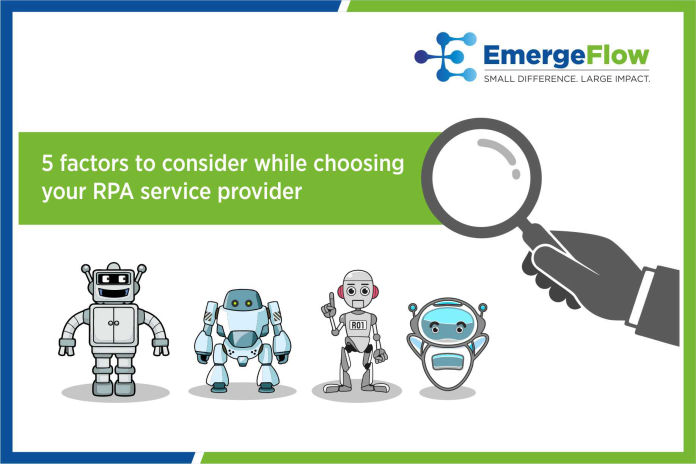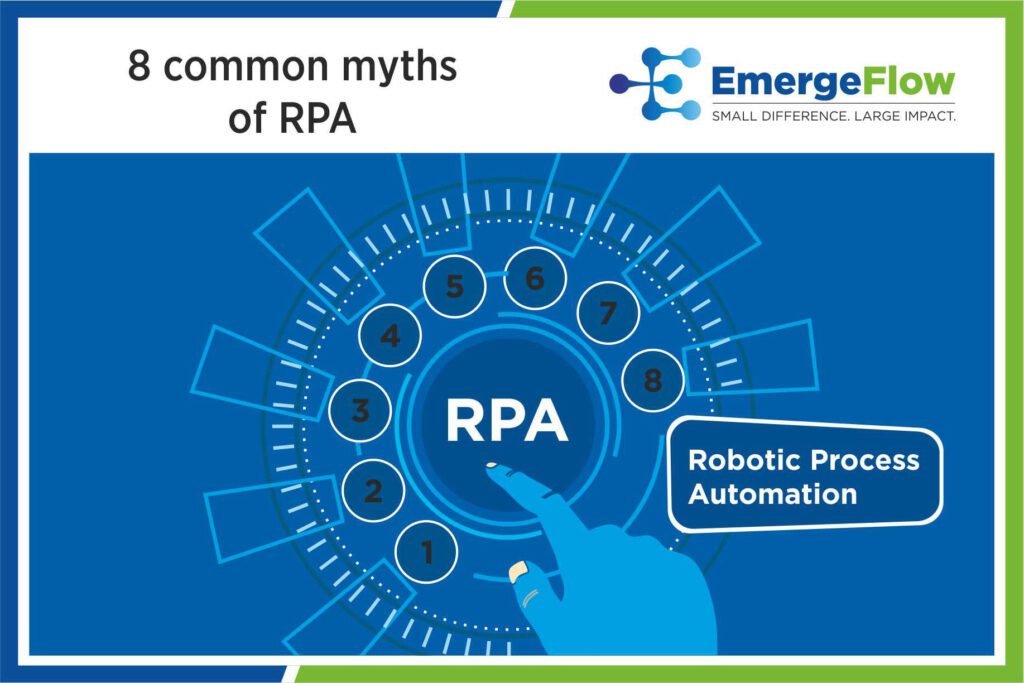Compliance is not easy. Businesses deploy valuable resources to meet compliance needs and avoid legal matters. Do you want to make it easier and more accurate?
Just like various other business processes, RPA helps in automating compliance functions. With the pandemic in place and the industry’s dynamic nature, businesses use RPA to automate various business processes to save resources and enhance efficiency. Compliance, in particular, can be a tedious task with its application in almost every aspect of business- finance, security, network, payroll, etc.
Compliance means obeying or abiding by the laws and policies related to data security, customer and employee privacy, and integrity. It includes all the tasks associated with identifying and resolving business risks and legal cases. The compliance department needs to constantly look into all the business departments and functions to monitor, identify, prevent, and resolve such affairs. The intricacy and complexity open the door for business interruptions and many inaccuracies.
Hence, post-pandemic many businesses started relying on technology and automation to make compliance easier. But how does RPA help with compliance, which is a wide application business process?

How Does RPA Help In Compliance?
RPA, a technology used to automate various business processes such as data entry, sorting, reporting, emailing customers, and much more, can help to make compliance easier. The complexity of compliance and its interference with other business operations make it a hassle. But RPA can make compliance efficient and accurate by integrating with different software and systems effortlessly. With simple process discovery and selection, businesses can automate compliance to save enormous resources. RPA helps businesses with compliance to:
- Enhance Productivity: Compliance is a complex process that requires significant resources when done manually. The introduction of RPA makes it more seamless, efficient, and accurate. This enhances the productivity of the firm’s compliance management. The job finishes faster with better results.
- Save Resources: Compliance demands time, money, human resources, and tools to ensure accuracy and efficiency. However, manually the consumption increases due to the involvement of multiple people and business units. As the business size increases, compliance becomes more extensive and complex instead of easing out. RPA helps to save resources and cut costs for the business by automating the process and making it manageable.
- Increase Coverage: Manual compliance has many limitations regarding time, money, interrupting business operations, and coverage. Big business firms with many departments and sub-divisions have an extensive compliance unit. RPA can enhance the coverage by getting away with constant interference and working in the background seamlessly. By integrating bots into the system, compliance coverage increases significantly.
- Improve Auditability: Businesses spend lots of resources on auditing at regular intervals for improved decision-making and compliance management. RPA improves auditability by giving deeper visibility into business legal matters and reducing the chances of errors. With manual processes, audits can take more time, lead to interruptions, and leave room for errors.
- Refine Compliance Management: Compliance is a wide subject that covers almost all the other departments to avoid legal affairs and ensure adherence to policies. With RPA, compliance management becomes effortless and manageable as many jobs are automated to reduce interruption. Businesses spending millions on the compliance department can deploy RPA to enhance accuracy and assist the team.
But how does RPA exactly help with compliance? How will it integrate with all business units without intervention and make compliance a breeze? We talked about its benefits but let us see if it is feasible to automate compliance with RPA.
How Do RPA and Compliance Work Together?
Just like before automating any other business process, businesses need to run a process identification test to spot opportunities. This involves, either manually or via bots, identifying the processes which can be automated. The next step in the planning process involves performing a feasibility test for the identified processes. Not every identified process will generate the best results and lead to optimizing resource utilization. Often, stakeholders discuss with managers of different departments at different levels to prioritize RPA implementation.
Once the processes have been selected and prioritized, the businesses get into the implementation. This involves documenting and mapping the process for automation. Business identifies the multiple touchpoints and works into the RPA deployment. It naturally takes about 6-8 months for RPA to show results and improve efficiency. Let us look at 5 use cases of RPA in the compliance area.
5 Use Cases Of RPA In the Compliance Domain
Even though RPA requires specific conditions to be fulfilled for its implementation, it can cater to many compliance-related processes. To begin with, the process should be structured and rule-based to deploy automation. Secondly, RPA implementation should save resources for businesses and bring a positive ROI. Oftentimes, RPA can lead to neutral or negative ROI despite saving resources on some levels.
It includes various structured tasks, particularly in compliance, which deals with adherence to law and policy, regulation, and monitoring. Businesses can easily identify these to automate them for better resource utilization. Here are 5 use cases of RPA in the compliance field.
#1 KYC Onboarding
KYC (know-your-customer) onboarding is a process that companies opt for to avoid tax invasion, money laundering, and any other kind of fraud while signing up new customers. RPA can help to gather and reconcile the data related to customers easily, making customer data management a breeze.
#2 Internal & External Reporting
Data collection and management are not restricted to the KYC process. External and internal reporting is less of a hassle when all the data is preserved and retrievable. RPA makes data gathering, storing, retrieving, and handling easier leading to enhanced reporting and evaluation.
#3 Mortgage Remedy
Mortgage collection and management is complicated and requires a lot of calculation provided the diverse choice of payment options and lending arrangements. RPA helps to reduce the chances of error and takes over the related complexities.
#4 Reconciliation
Reconciliation involves checking accounts to ensure consistency and accuracy, avoiding errors. When done manually, there is always a scope or error. Hence, RPA can help to increase accuracy and save time in the case of structured evaluation processes.
#5 AML Alert
AML (anti-money laundering) alert aims to avoid money laundering at the earliest stage- placement. It has three stages- placement, layering, and integration which end up with funds becoming part of the regular economy. AML alert operates on semi-automated and manual structured processes, which can be replaced RPA.
Can Compliance Be Automated?
Compliance is easier with RPA!
RPA can automate compliance tasks by reducing interruptions, errors, and complexity of the task. Be it partial or complete tasks related to compliance, if they have a structure and follow a rule-based process, RPA can make them seamless and effortless. Want to know how to proceed?
Contact our team to automate compliance-related tasks easily. We at EmergeFlow ensure efficient process discovery and automation implementation to help you achieve successful RPA implementation.




